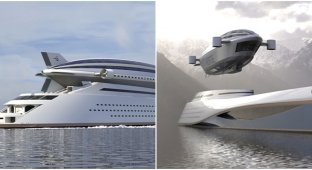A Selection of Interesting and Unusual Photos from the USA (21 photos)
Let's dive into the 20th century and see what life was like in the States. 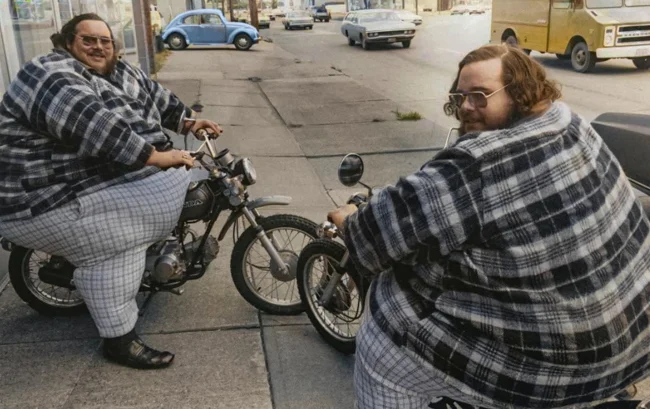
Tourists at the Nevada Nuclear Test Site. USA, 1950. 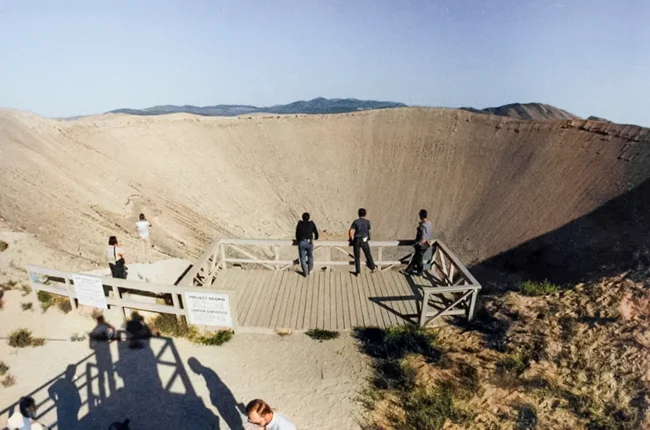
Sergeant Sullivan examines a safe that three young criminals tried to crack. USA, 1930s. 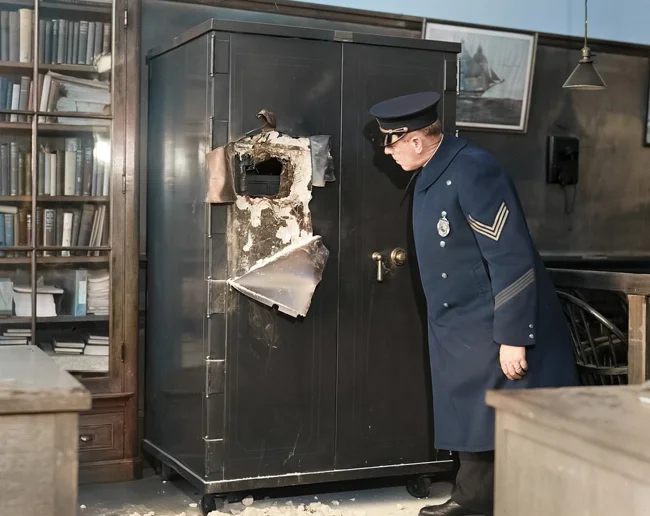
A commission of inquiry examines the wreckage of the Hindenburg in a field in New Jersey, May 8, 1937. 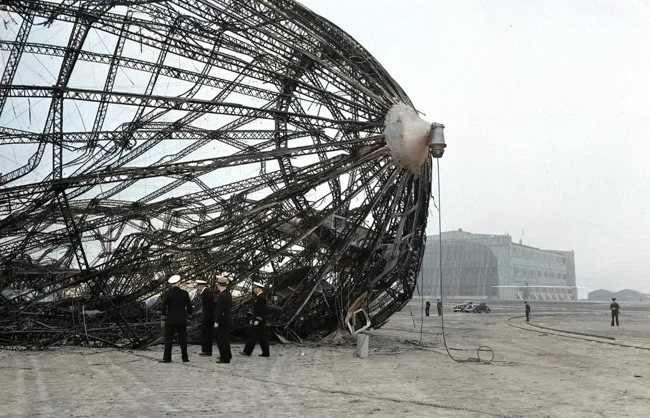
The Hindenburg was the largest and most famous passenger airship in history, built in Germany in 1936. It is named after Paul von Hindenburg, the former president of the Weimar Republic. The Hindenburg became a symbol of technological progress and German engineering. It was used to cross the Atlantic by businessmen, diplomats, and members of the aristocracy. The airship advertised the Nazi regime as an example of technological brilliance. The fate of the Hindenburg airship was as short-lived as the Nazi regime itself.
A beach with the World Trade Center in the background. New York City, 1977. 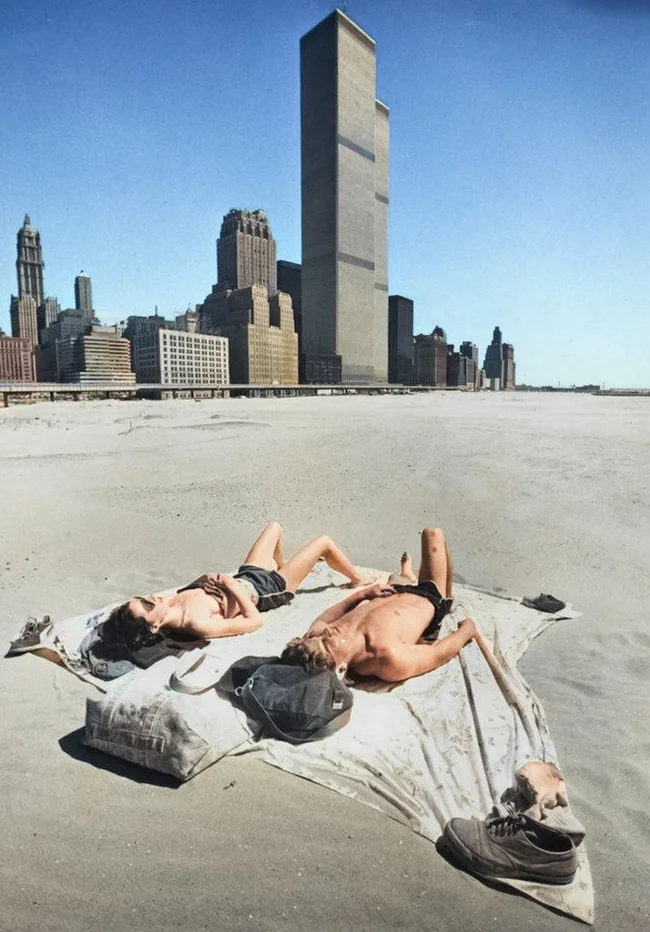
Photo credit: Fred R. Conrad
Advertisement for a piano company. California, 1930s. 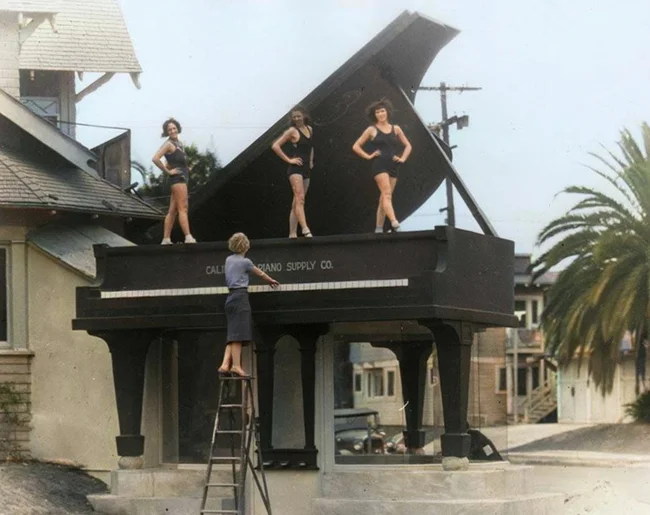
This piano showroom was built in the early 1930s. It was later renamed The Big Red Piano. In an attempt to save the building, an attempt was made to move it to a new location in the 1960s. However, during the complex transportation operation, the structure could not withstand the load and was destroyed.
Children in Harlem. New York, 1977. 
Photographer: Chester Higgins Jr.
Harlem is a historically African-American neighborhood in northern Manhattan.
The first rocket launch from Cape Canaveral, Florida, 1950. 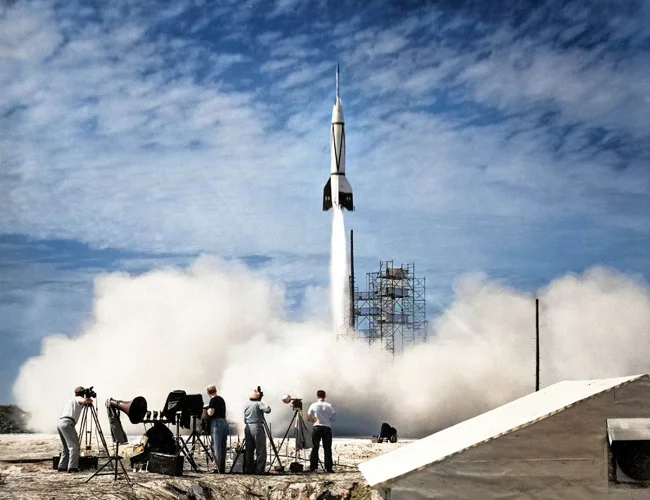
On July 24, 1950, the first American ballistic missile, the Bumper-8, was launched from the Cape Canaveral test site. The rocket was a combination of a captured German V-2 and the American-designed WAC Corporal upper stage, created after World War II. Although the launch failed, it was an important step in the exploration of space and marked a new era for the United States as a space power. From that day on, Cape Canaveral officially became the main center for American rocket testing and space launches. The central figure of the entire project was Wernher Magnus von Braun, a member of the Nazi Party since 1937 and holder of the rank of SS-Sturmbannführer, known today as the father of the U.S. space program.
Hooverville shacks near Seattle, Washington, 1937. 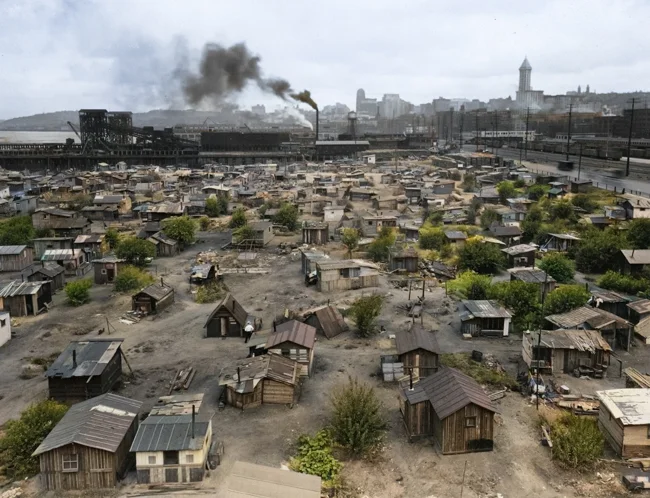
"Hooverville" became a catchall term for slums and homeless encampments during the Great Depression. There were dozens of them in Washington state, hundreds across the country. "Hooverville" was a deliberately politicized label, emphasizing that President Herbert Hoover and the Republican Party were to be held accountable for the economic crisis and its woes. Seattle's main Hooverville was one of the largest, longest-running, and best-documented in the country, standing for ten years, from 1931 to 1941. Occupying nine acres of public land, it housed up to 1,200 people, claimed its own local government, including an unofficial mayor, and enjoyed the protection of leftist groups and sympathetic government officials until the land was needed for shipping facilities on the eve of World War II.
A mother and her children roll cigarettes in a New York City apartment building in 1909. 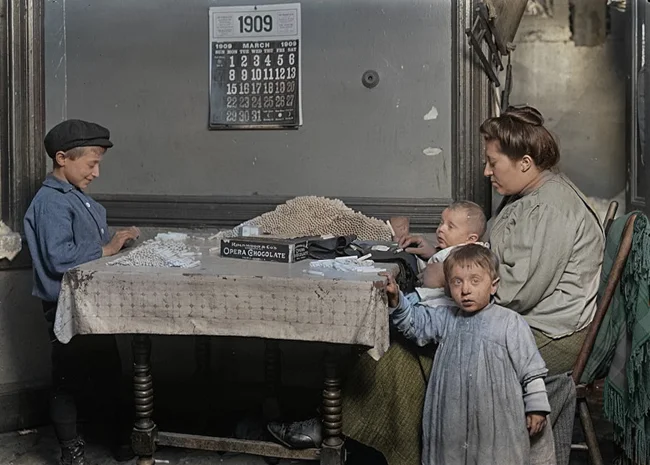
Poverty in New York City in the early 20th century was an integral part of the city’s reality, despite the outward splendor of the growing metropolis. During this period, New York became one of the main centers of immigration, where people from all over the world arrived in search of a better life. However, for most of them, it began in cramped, overcrowded apartments in the slums of Manhattan, Brooklyn, and other areas. Millions of city residents lived in tenements — cheap apartment buildings where entire families huddled together in a few square meters. Often, several families shared one apartment, or even a room. Sanitary conditions were terrible: no ventilation, poor sewage, unsanitary conditions, and the constant threat of epidemics. The workday could last 12-16 hours, and wages barely covered the most basic needs. And everyone earned as best they could.
The University of Chicago Archery Team, 1935. 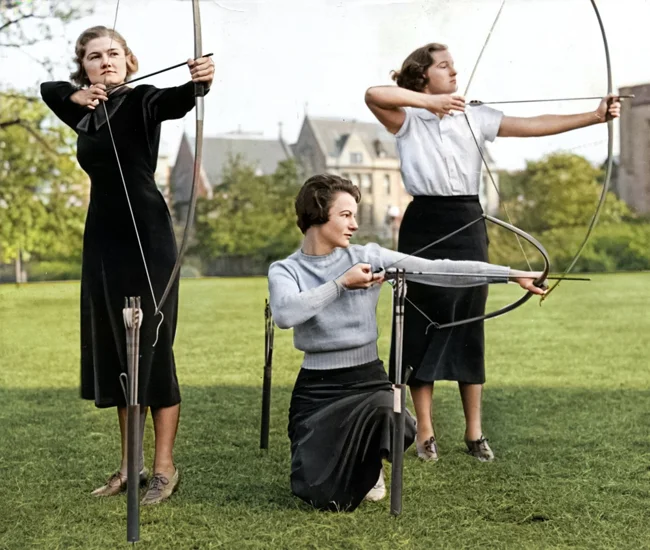
90-year-old Mr. Frank Foss from St. Petersburg, Florida, USA, with his banjo made from a frying pan and other scrap materials, 1972. 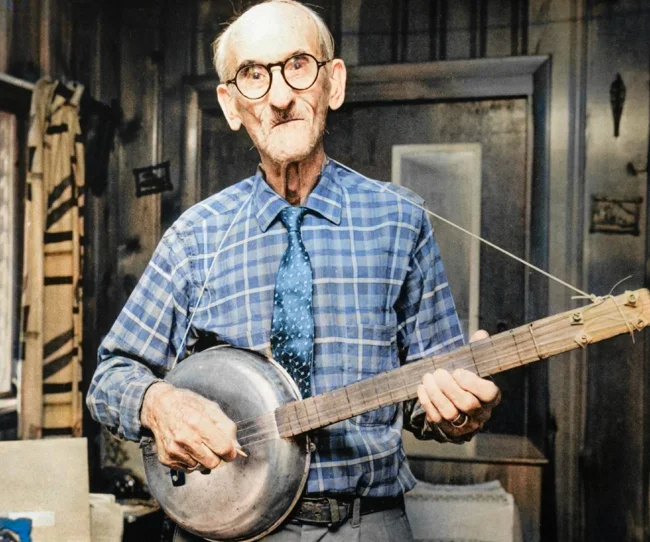
Billy and Benny McCrary are the heaviest twins in the world, weighing 336 and 327 kg, 1978. 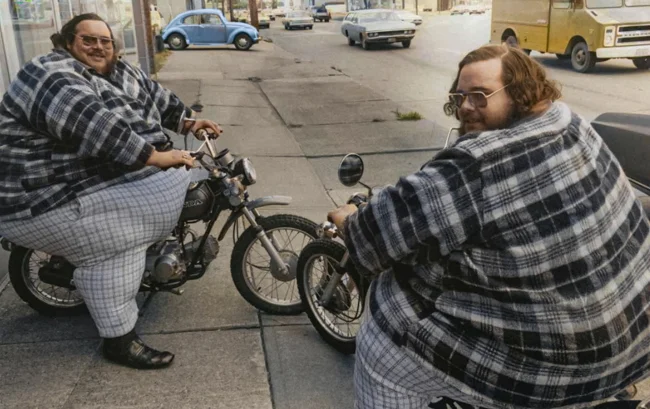
Despite their weight, the brothers lived very active, but short lives. They constantly participated in various shows and were wrestling stars. Billy passed away at the age of 32 - the cause was a tragic accident during a risky motorcycle stunt at the very edge of Niagara Falls. Benny, who outlived his brother by almost 20 years, died in 2001 at the age of 54 from heart failure.
Kayenta, Arizona, USA, 1967. 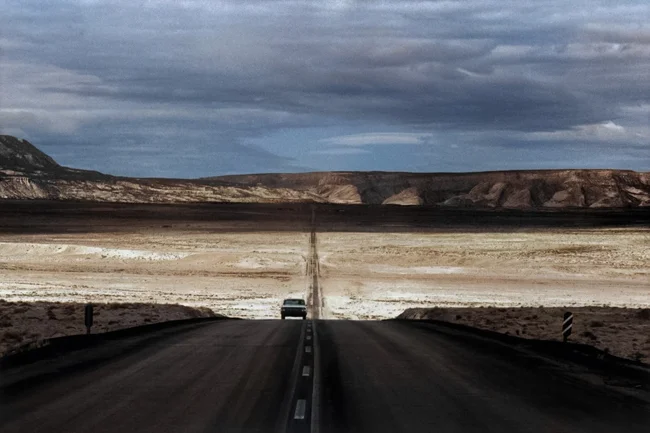
Photographer: Hiroshi Hamaya
A couple in a short silent film from the Paramount Comedy Travels series. Hollywood, California, late 1910s. 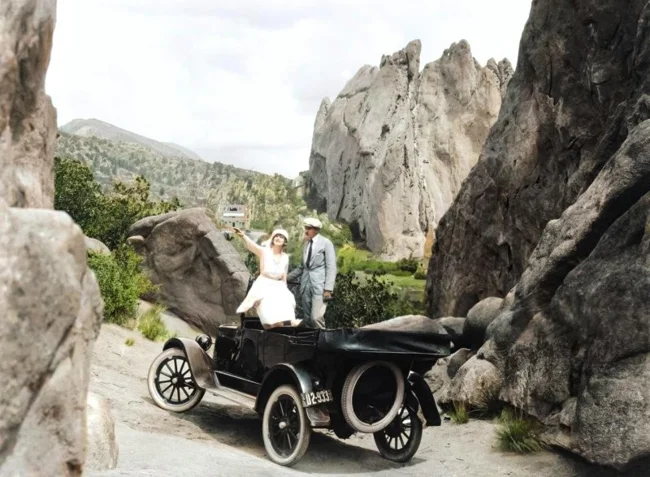
Ocean Beach, Land's End, San Francisco, 1950s. 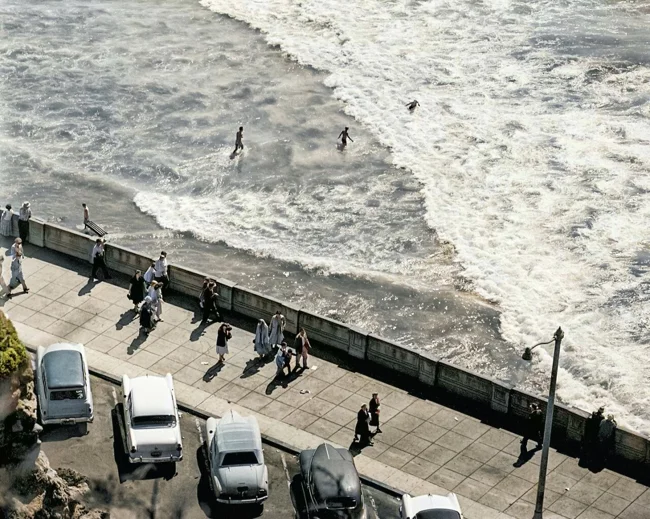
Photographer: Fred Lyon
A motorcycle racer attempts to break the world land speed record at the Bonneville Salt Flats in Utah, 1948. 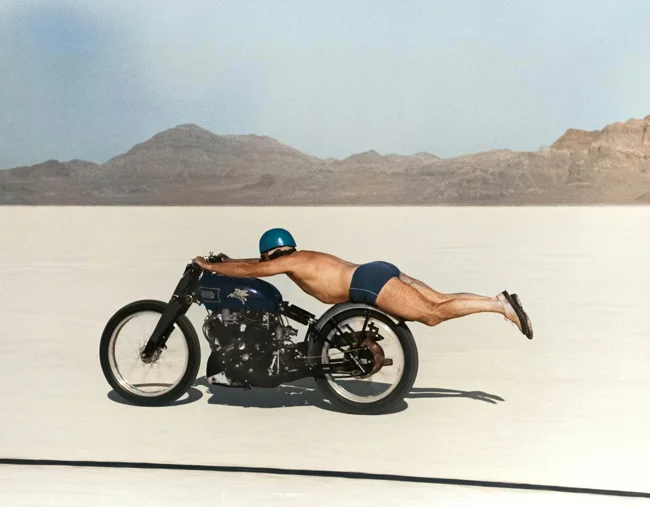
This photo shows motorcycle racer Rollie Free, who set the world land speed record on a motorcycle in 1948. Reducing aerodynamic drag was key to achieving maximum speed. The 47-year-old racer, driving his Vincent HRD Black Shadow, pressed himself as close to the tank as possible, taking an almost horizontal position. But that was not all - to reduce air resistance, he decided to perform in a completely atypical way for racing: his equipment consisted of only swimming trunks and a helmet. On the Bonneville Salt Flats, this daring experiment was a success - Free reached a speed of 240 km/ h, setting a new world record. The photo of that very race went down in history as one of the most famous in the history of motorsports. It was even included in the Motorcycle Hall of Fame of the American Motorcycle Association (AMA).
Participants in the Miss Cigar Queen contest, Los Angeles, 1937. 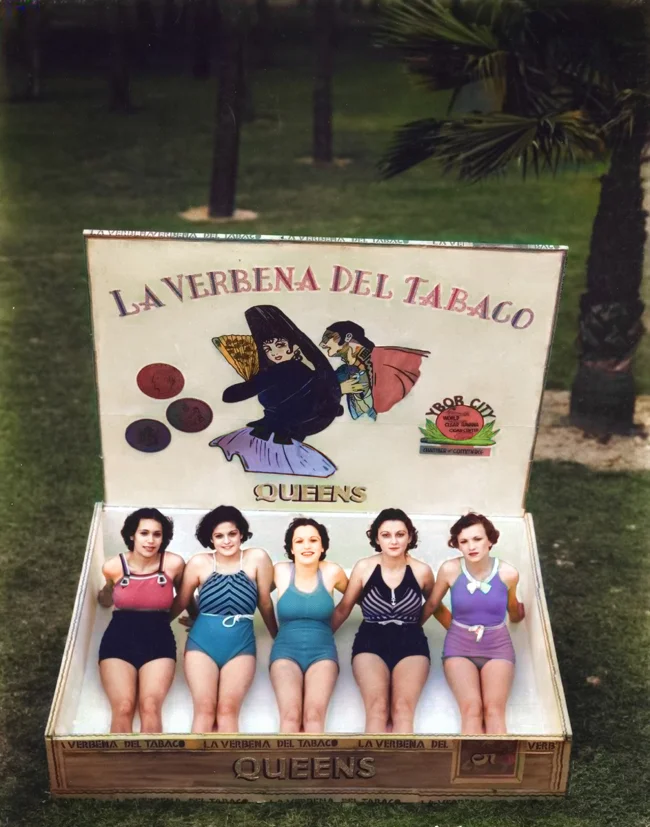
In the 20th century, there were beauty contests in the USA for every taste and color. The contests were organized by various publications - magazines and newspapers, industrialists, trading houses. They were organized both for advertising purposes and simply against the background of a general passion for such competitions. Some of them were distinguished by vulgarity, others - by dryness and monotony, others tried to maintain a serious, solemn tone. However, the main goal of almost all such events, while the public's interest remained, remained one - making a profit. Most of the contests were one-time in nature and disappeared as quickly as they appeared.
Provincial America. Life in Kentucky. 1972. 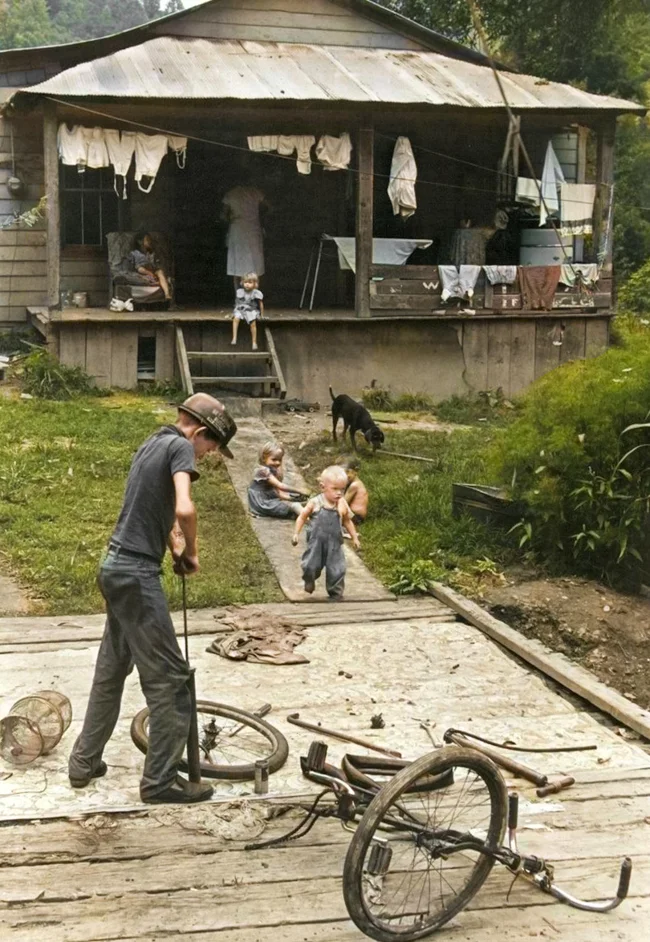
Kentucky has one of the highest poverty rates in the United States, ranking among the top five most socially disadvantaged states. Life in Kentucky throughout the 20th century was often described as difficult and disadvantaged, especially in the mountainous regions, where the population had faced centuries of poverty, illiteracy, lack of infrastructure, and limited access to health care. People lived in shacks without sewerage or running water. The region's economy depended on the coal industry, which brought profits to companies but left local residents without a stable income and prospects. Instead of development, there were vicious cycles of poverty passed down from generation to generation. Government assistance and food rations became the only source of survival for many, and dependence on social benefits became the norm.
Vaccination. New York, 1947. 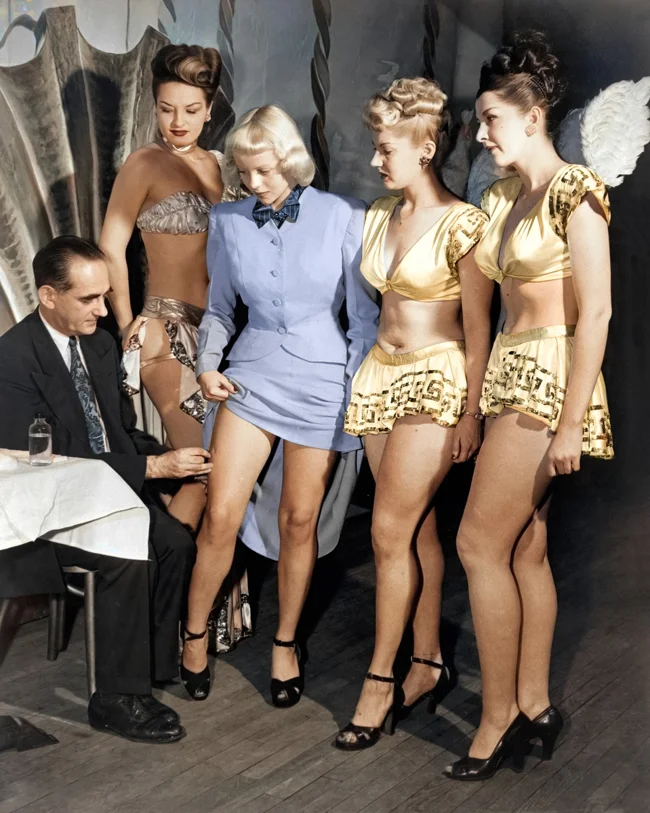
A Health Department employee administers smallpox vaccine to dancers at Billy Rose's Diamond Horseshoe. Who would have thought that routine vaccinations could take place in such an unusual place - among the glitter, costumes and energy of the big city. It seems that some people really do have the most unexpected and colorful work moments...
A street vendor, San Francisco, 1950s. 
Photographer: Fred Lyon














